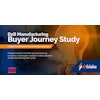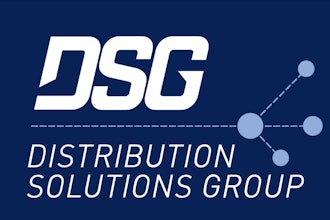
The COVID-19 crisis is having a significant impact on the distribution industry, and it’s affecting each company in different ways. If your products are extremely valuable in this time, for instance, you might have a surge in demand that is hard to manage from both ends. On the other hand, you may have products that are in markedly low demand due to store and restaurant closings.
Amid all of this is the fact that you must keep your employees safe and consider their wellbeing first and foremost. And every distributor must focus on recovering in the best shape possible. To gain more control in this volatile and unpredictable market, we suggest that you mobilize, observe, validate and enable – or MOVE. Here’s how.
Initiate a Constructive Patience-to-Panic Ratio
It’s important to understand and acknowledge the current situation while also being proactive and keeping yourself grounded. Because we can’t know how long this uncertainty will last, we want to balance the panic and the patience.
It can be difficult not to skew towards panic and lean into the “water and toilet paper” approach: Every sales order from a customer is an emergency order, and every purchase order to the vendor is a rush order to increase volume (think five to 20 times what distributors would normally order). Understandably, in these unprecedented times, logic and planning easily fall to the side. Customers and distributors push the panic button, amplifying pressure on suppliers and stress testing the entire supply chain. More time is spent on panic than patience.
Is your company an industrial distributor? Take ID's 2020 Survey of Distributor Operations and be entered to win one of five $10 AmEx gift cards. Information and survey link here.
For a better standing in the long-term, however, you should instead apply the 90-10 rule (where our research has found that about 90 percent of profit comes from 10 percent of customers) to your patience-to-panic ratio so that you can make decisions from a point of control. It’s more sustainable, though challenging to implement at the pace of demand right now, to spend only 10 percent of your time on panic and 90 percent on patience and planning.
The initial panic is natural (we at ActVantage panicked, too, and are no exception), but the time we spend making decisions in a panic is crucial. Of course, there is no perfect plan for the situation at hand, and it will take effort to find a direction for your company. But you must look ahead and plan for how you want to come out of this crisis. Courageous companies that invest now by planning how their company may transform, and to what extent, create value and can emerge with a sustainable, differentiated growth strategy.
This may seem daunting and implausible, but the below actions and examples can be tremendously helpful as you manage through the crisis. The process will vary significantly depending on your business, as in small vs. large companies and public vs. private ownership. But wherever you stand, whatever your company, it’s time to MOVE:
1. Mobilize
Identify things you cannot afford to lose during these times to retain your capability and continue to create value in the marketplace. Without these capabilities, you cannot survive. For many distributors, the most vital asset to their business is their people. In a panic, you can quickly lose sight of your workforce and the needs of individuals as you press them to support demands. This can only serve to weaken their trust in you, and you could lose them in the process.
Step back and identify those essential assets. Whether it’s your workforce, your relationships with your suppliers and customers, transportation or facilities, you’ll need to focus on those foundational aspects that will keep your company creating value through the crisis and beyond. The action you need to take may be difficult, and you must consider your decisions carefully.
Mobilizing in Action: One distributor had to make the tough decision of reducing their workforce through these tough times. This is a decision business leaders across all industries are facing right now, and some have been fortunate enough to find alternatives. For instance, when faced with letting several inside sales reps go, one distributor negotiated to re-allocate them as support for a non-competing distributor. Such opportunities are rare, but certainly worth exploring if you find them.
Still another distributor got strategic and creative with their transportation. They experienced a drop in demand and their trucks were sitting in parking lots. To keep the workforce secure, they started running trucks for another distributor (as well as retail and restaurants) to serve their customers. Such joint-distributor models are evolving rapidly.
2. Observe
Next, you must determine how you will invest in those vital assets to retain them and keep them strong. To do this, perform a quick financial assessment. What financial requirement will help you make step one happen? As an example, 5 in 8 of the companies we spoke with took pay cuts at top management level to continue to support their people and payroll as budgets tightened.
Observing in Action: One distributor had a strong set of strategic suppliers overseas. They spent a lot of energy over the years developing their overseas supply chain, and their domestic suppliers in the strategic group were a smaller set. A key decision they are considering during this time is developing and identifying a set of domestic vendors for their business. This is an action and a plan that transforms part of their business and can help them come out of this current crisis healthy.
3. Validate
One of your greatest resources for developing and adapting a plan for sustainability is your competition. What is your competition doing right now and where are they struggling? How will you combat similar challenges in your business and are there successful strategies can you adopt?
Now, it’s important to note that we say this from a position of compassion. We are all facing similar battles right now, and we do not celebrate the losses of others. However, there is a lot to be learned in this new environment, and wise business owners have a constant ear to the ground in order to better understand how the market is responding and adapt.
One common learning opportunity is with distributors who don’t maintain balance among their primary value creators: inventory, customers and suppliers. Distributors cannot address inventory without the other two. In many cases, the cycle goes as follows:
- A distributor’s purchasing team tries reducing inventory.
- The salesforce gives them pushback, worrying that reduced inventory will impact their top accounts.
- Once purchasing and sales resolve this, the supplier management team gets upset because the inventory reduction leads to key suppliers dropping volume discounts.
The most common outcomes are unsuccessful price increases, aggressive supplier negotiations, and unhappy customers. When customers are unhappy, distributors abandon all hopes of value creation and resort to decreasing prices. Distributors cannot afford to look at inventory in isolation. Inventory, customers and suppliers go hand-in-hand. This holds and will continue to hold before, during and after we’ve pulled through this crisis together.
Validating in Action: One distributor kept putting off training for their inside sales and customer service team and instead focused on sales alone. Meanwhile, their competition invested in training over the last two to three years. In this time of crisis, the original distributor’s teams seem stressed and unprepared in their interactions with customers. In turn, the competition that invested in training is seeing many of those customers coming to them, as their teams are better able and equipped to handle the needs coming in.
Another distributor has most of their personnel working from home. They made a management decision to take advantage of this environment to have their team go through online and virtual training. This is a strategy you might want to follow in your own organization if applicable, and it can set you up for strength in the long run.
A third distributor is forming a small committee of individuals from purchasing, systems (IT) and finance to see how the demand and supply data could impact the recommendations coming out of their ERP system. They’re asking themselves how they’ll be able to use the data tracked during this panic-buying-and-service mode after the crisis. They believe that, coming out of this, their processes will be broken and inefficient and need fixing right away. Does this sound like something you should plan for?
4. Enable
Finally, once you’ve gained an understanding of the actions you need to take, create your plan for sustaining and transforming your business. Determine what your new value propositions will be and how you will make them realities. Communicate your plan for coming out better and stronger as a company with your shareholders (your employees, customers and vendors). Help them to understand their roles in delivering on the new value propositions. Times like this force companies to do a reset – process-wise, company-wise and, above all, culture-wise. Use the current environment to transform your leadership style, sales management, and more.
Building a new value proposition may seem intimidating, but we at ActVantage are constantly walking distributors through this process and have identified a powerful formula for success. We want to stress that there is a proper order of importance: people, process and technology. The result is better performance.
And there are defined best practices for boosting profitability, sales growth, asset efficiency and healthy cash flow. If you address problems in your process by applying more manpower or a new technology, you will only exacerbate the issue and risk sending your business into decline. This risk is much greater during this time of uncertainty, but it is also more tempting than ever to take that risk in order to gain control. It comes back to the 90-10 rule: 10 percent panic and 90 percent planning, not the other way around.
Enabling in Action: There are three lenses that we encourage you to see, consider and adapt in developing your new value proposition and business transformation. Take yourselves back to the drawing board and use this environment to reinvent your core value drivers:
Value Creation: This involves the three sides of the value triangle, which are inventory stratification, customer stratification and supplier stratification.
Value Capture: This involves your pricing and sales management strategies.
Value Innovation: This involves analyzing and innovating the customer experience (aligning voice of customer, voice of process and voice of focus), as well as sales enablement.
It’s a big ask to flip the patience-to-panic ratio when there are so many unknowns. It’s hard to take a step back in such a chaotic environment. However, your business will be much stronger and more agile in the face of change if you identify what is most essential, invest to strengthen those essentials, and adapt your value proposition. And keep in mind that no single company or person is going to be able to get through this alone. It’s about the collective wisdom.
Without your people, there is no collective wisdom. Make a choice and take this opportunity to redefine or home in your vision and mission based on how you want to come out of this crisis as an individual and as a company – for the long term. If you need support and guidance, we at ActVantage have decades of experience collaborating with distributors to create joint solutions for some of their biggest challenges. When you can’t get your arms around the chaos, we can step in to help you gain perspective and make the most impactful investments and changes.
 Pradip Krishnadevarajan
Pradip Krishnadevarajan
Pradip Krishnadevarajan is co-founder of ActVantage, which helps distributors drive profitable growth through analytics. He has more than 15 years of experience helping hundreds of distributors, while co-authoring seven books for the National Association of Wholesaler-Distributors. Before joining ActVantage, he co-founded the wholesale distribution-focused research lab at Texas A&M University’s Industrial Distribution Program. Contact Pradip at [email protected] or visit actvantage.com.























